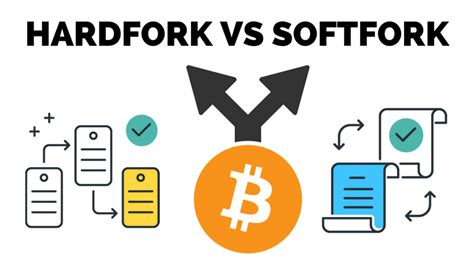Understanding the Basics of Ethereum Soft Forks and Hard Forks
When it comes to cryptocurrency, understanding the difference between soft forks and hard forks is essential for those looking to participate in the blockchain revolution. In this article, we’ll take a look at what a soft fork, a hard fork, and the differences between them.
Soft Fork: A Flexible Alternative
A soft fork is an alternative approach to implementing changes to the Ethereum network that allows for incremental updates without disrupting the entire ecosystem. Unlike traditional hard forks, which require a consensus vote from a majority of users, soft forks can be implemented with fewer complications and fewer security risks.
Think of a soft fork as an incremental update to your smartphone’s operating system. You don’t need to upgrade to an entirely new application or hardware, but rather install an incremental update that improves performance or adds new features over time. Similarly, a soft fork allows developers to test and refine changes to the Ethereum network without causing a major overhaul.
Key features of a soft fork:
- Incremental updates

: Changes are rolled out in small increments to make it easier for users to test and adapt before the full rollout.
- Less risk of catastrophic failure: Since the update is incremental, there is less risk that it will cause significant damage or disruption to the network.
- Community engagement: Developers can participate in the soft fork process through open source contributions and testing, allowing them to identify potential issues and improve the overall quality of the upgrade.
Hard fork: the traditional approach
In contrast, a hard fork is a much more radical change that requires the consensus of all users to be implemented. It’s like upgrading your smartphone without installing new apps: you have to switch to a completely different operating system or hardware.
Unlike soft forks, hard forks are typically used for large updates or significant changes that cannot be quickly reverted if problems arise during the implementation process. Hard forks often involve a more complex and controversial process, as they require a consensus vote from all users, which can lead to disagreements and delays.
Hard fork features:
- Consensus-based: Changes are implemented through a voting process that requires the agreement of a majority of users.
- Risk of catastrophic failure: Hard forks pose a significant risk of network disruption or financial loss to users who hold funds in other wallets or exchanges.
- Limited community involvement: Developers may not have as much influence during the development phase of a hard fork, and changes may be more difficult to test and adapt before implementation.
When can a soft fork be implemented?
While there are no specific rules regarding when a soft fork can be implemented, it typically occurs in situations where:
- Additional updates required: Changes that add new features or improve performance without disrupting network operations.
- Community engagement is very important: Developers want to test and improve changes before implementation to ensure they meet community requirements.
- The risk of catastrophic failure is low: The change will not have significant consequences for users if problems arise during testing.
In short, soft forks offer a more flexible and gradual approach to implementing changes to the Ethereum network, while hard forks are a traditional approach that requires consensus and can be more difficult to implement. Understanding these differences will help you navigate the complex world of cryptocurrency development and make informed decisions about your participation in the blockchain revolution.